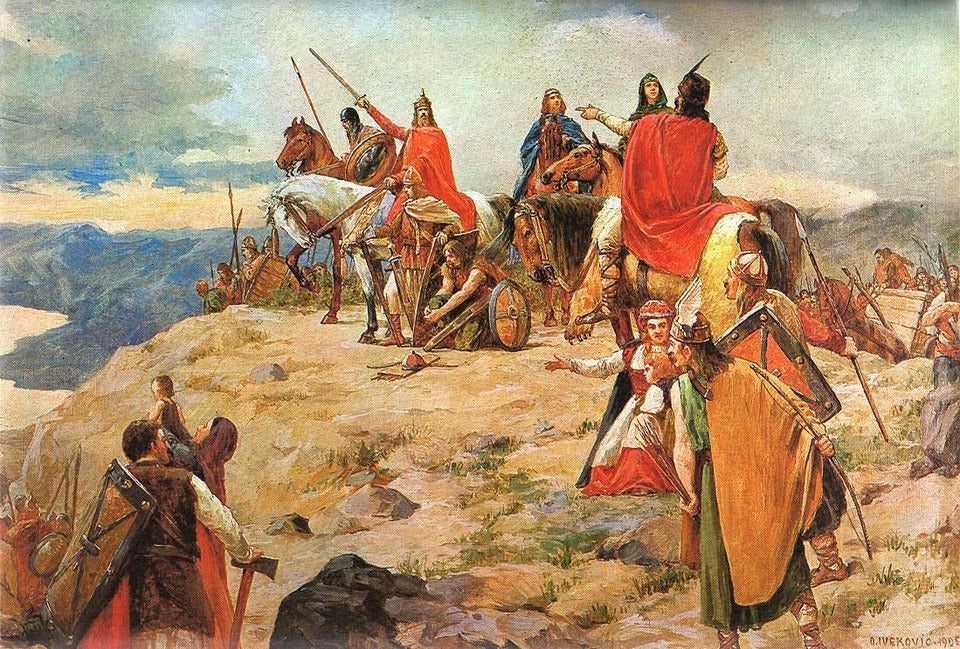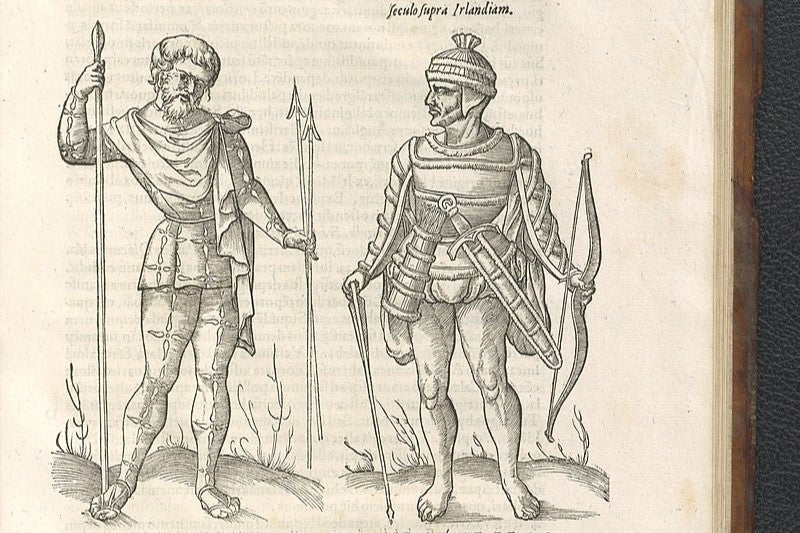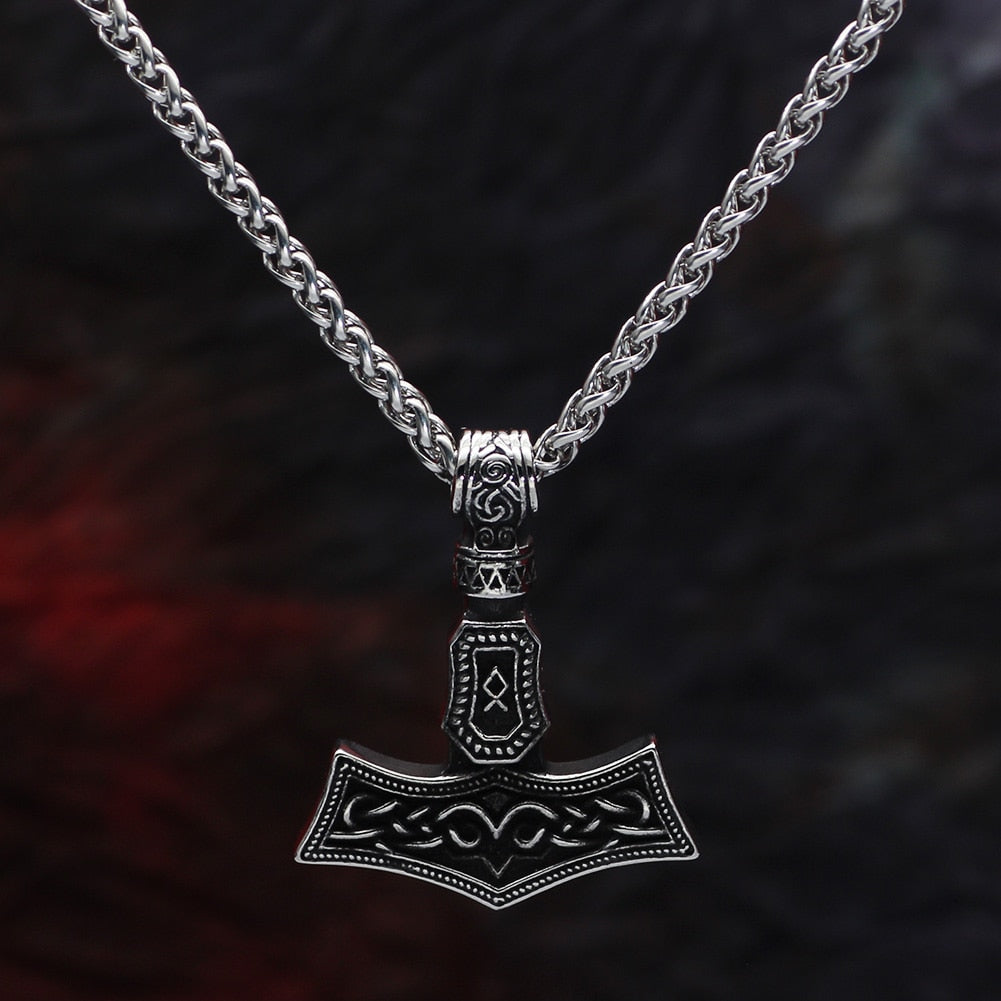
Gepids and the Gothic Legacy: From Scythia to the Carpathians
Among the lesser-known Germanic peoples of Late Antiquity, the Gepids occupy a curious and often overlooked position. Closely related to the Goths and originally part of their migratory wave into Scythia, the Gepids would later carve out a short-lived but powerful kingdom in the Carpathian Basin. Their story, preserved in sources like Jordanes' Getica, spans subordination to the Huns, ephemeral dominance in post-Hunnic Europe, and eventual obliteration by the Lombards and Avars. Despite their obscurity, the Gepids played a key role in shaping early medieval Eastern Europe.
Origins and Early Migration

Selection of pieces from the second Gepid prince tomb of Apahida (Photo: Laci3 CC0).
The Getica and the Ship Legend
The earliest mention of the Gepids appears in Getica, the 6th-century Gothic history by Jordanes. He records that the tribe originated in Scandinavia and traveled southward with the Goths during a legendary migration involving three ships. The Gepids, assigned the slowest ship due to their reputed sluggishness, arrived last. The term "Gepidae," Jordanes notes, derived from a Gothic word meaning "sluggish" (gepanta). While this etymology is likely pejorative folklore rather than linguistic fact, it reflects early perceptions of the tribe as somewhat inferior to their Gothic kin.
Relationship with the Goths
Despite these stereotypes, the Gepids remained intimately connected to the Goths, likely as a sub-group. Their early history in Scythia—modern-day southern Ukraine and Moldova—was marked by both cooperation and competition with other Gothic and Getic tribes. Over time, the Gepids developed their own identity, migrating further westward into the Carpathian Basin.
Settlement in the Carpathian Basin

Map of the Dacian Kingdom under King Burebista (Illustration: Portasa Cristian)
Establishing Power in Dacia and Transylvania
By the fourth century, the Gepids had settled in the region once known as Dacia, roughly corresponding to modern Romania. Archaeological evidence, including burial sites and richly adorned weaponry, confirms their presence particularly in Transylvania and along the Tisza River. Here, they established a formidable presence that allowed them to survive successive waves of invasion and domination.
Cultural and Political Life
While much about Gepid society remains uncertain, surviving artifacts suggest a stratified, militarized culture with considerable craftsmanship in metalwork. Gold and silver brooches, swords with inlaid designs, and burial customs show a fusion of Germanic traditions with Roman and local Dacian influences.
The Gepids and the Huns

Huns in battle with the Alans, 1870s engraving after a drawing by Johann Nepomuk Geiger (1805-1880).
Submission and Survival under Attila
Like many groups in Central Europe, the Gepids fell under the suzerainty of the Huns during the early fifth century. They fought as vassals in Attila's campaigns and remained under his dominion until his death in 453. During this time, they retained a degree of autonomy, governed by their own kings but required to provide troops.
Role in the Battle of Nedao (454 AD)
The turning point came with the Battle of Nedao in 454 AD. Following Attila's death and the fragmentation of the Hunnic empire, the Gepids joined a coalition of subject peoples, including Ostrogoths and Rugians, in rebelling. Their king, Ardaric, is credited by Jordanes as the leader of this uprising. The Gepids emerged victorious, decisively ending Hunnic dominance in the region and securing control over parts of the Pannonian Plain.
The Gepid Kingdom

Gepidia at its largest territorial extent (Photo: WikiEditor2004).
Flourishing in the Post-Hunnic Vacuum
In the decades following Nedao, the Gepids became one of the dominant powers in Eastern Europe. They established their capital at Sirmium (modern Sremska Mitrovica, Serbia), a strategically vital city along the Sava River. This period marked the height of Gepid political power, extending influence over parts of modern-day Romania, Hungary, and Serbia.
Sirmium and Relations with Byzantium
The Gepids maintained complex relations with the Eastern Roman (Byzantine) Empire. They alternated between hostility and diplomacy, at times serving as clients or foes. Sirmium became a contested site, and Gepid rulers engaged in diplomacy and warfare to maintain control over the Balkans. In the 6th century, the Byzantines began supporting the Lombards as a counterweight to Gepid power.
Conflicts with the Lombards and Decline

Arc fibulae, gilded silver, niello and garnet decorations. Late 5th or early 6th ct., Transylvania (Photo: Sandstein CC BY 3.0).
The Lombard-Gepid Wars
By the mid-6th century, the rise of the Lombards under King Audoin and later Alboin brought them into direct conflict with the Gepids. A series of wars weakened both sides. Despite temporary truces and dynastic intermarriages, conflict proved inevitable. In 567, a decisive campaign—allegedly supported by the Avars and Byzantines—led to the crushing defeat of the Gepids. Their last known king, Cunimund, was slain, and his daughter was taken by Alboin as a trophy bride.
Final Collapse and Disappearance
After 567, the Gepid kingdom vanished from historical records. Some survivors may have been absorbed by the Avars or Byzantines, while others were likely assimilated into surrounding Slavic and Germanic populations. Although the name "Gepid" disappears, their influence persisted through material culture and regional memory.
Archaeological and Cultural Legacy

Coin of the Gepids c. 491–518. Sirmium mint. In the name of Byzantine Emperor Anastasius I (Photo: Classical Numismatic Group, Inc CC BY-SA 3.0).
Material Culture and Burial Practices
Gepid archaeological sites, especially cemeteries, have yielded insights into their society. Rich female burials suggest a warrior aristocracy alongside a broader populace. Weaponry, jewelry, and horse burials point to both martial culture and social hierarchy. Notably, the use of gold filigree, garnets, and intricate metalwork links them to both Gothic and Hunnic artistic traditions.
Linguistic and Ethnic Traces
The Gepid language is unattested, though it was likely East Germanic, closely related to Gothic. Ethnically, they were absorbed into the melting pot of post-Roman Eastern Europe. Some scholars suggest their memory lingered in medieval legends and place names in Transylvania and the Banat.
The Gepids remain one of the more elusive and enigmatic Germanic tribes of Late Antiquity. From a mocked offshoot of the Goths to rulers of a Balkan kingdom, their trajectory encapsulates the volatility of the post-Roman world. Their defeat by the Lombards and subsequent disappearance does not erase their impact on the shaping of Eastern Europe in the early medieval period. Through archaeology and historical texts, the legacy of the Gepids continues to be unearthed, providing a clearer picture of a people who once stood at the crossroads of empire and migration.
ᚸ
Frequently Asked Questions (FAQs)
Were the Gepids part of the Gothic migration?
Yes. According to Jordanes, the Gepids traveled with the Goths from Scandinavia to Scythia, but arrived later due to being assigned the slowest ship.
Where did the Gepids establish their kingdom?
The Gepid Kingdom was centered in the Carpathian Basin, particularly in Transylvania and around Sirmium in modern Serbia.
How did the Gepids defeat the Huns?
In 454 AD at the Battle of Nedao, a coalition led by the Gepid king Ardaric defeated the Huns, ending their regional dominance.
What caused the downfall of the Gepids?
The Gepids were defeated in 567 AD by a coalition of Lombards and Avars, supported by the Byzantines. Their king Cunimund was killed, ending the Gepid state.
Is there any trace of the Gepids today?
Although the tribe disappeared, their legacy survives through archaeological remains in Romania, Serbia, and Hungary, and in historical records.
References
Jordanes. Getica, translated by Charles C. Mierow. Princeton University Press, 1915.
Heather, Peter. The Fall of the Roman Empire. Oxford University Press, 2006.
Wolfram, Herwig. The Roman Empire and Its Germanic Peoples. University of California Press, 1997.
Curta, Florin. The Making of the Slavs. Cambridge University Press, 2001.
Pérényi, Barnabás. "The Archaeology of the Gepids: A Review of Burial Practices and Elite Culture." Acta Archaeologica Carpathica, Vol. 53 (2018).
Heather, Peter. Goths and Romans 332–489. Oxford University Press, 1991.








